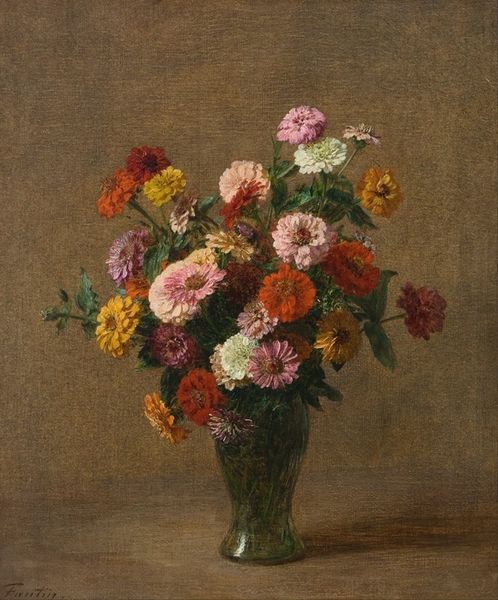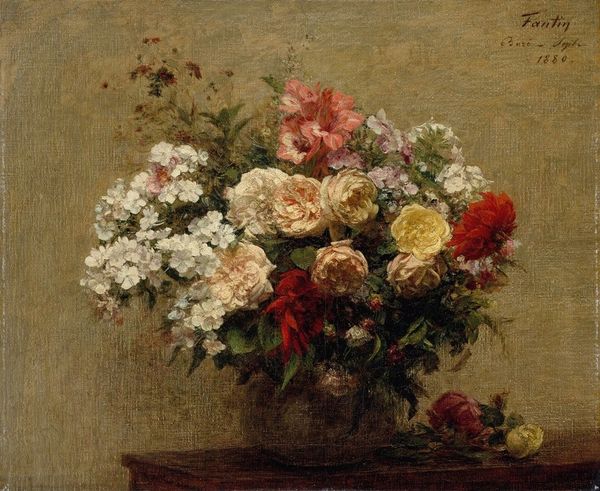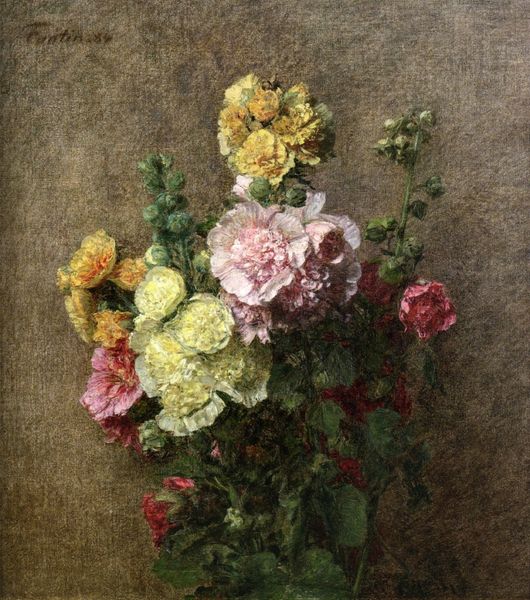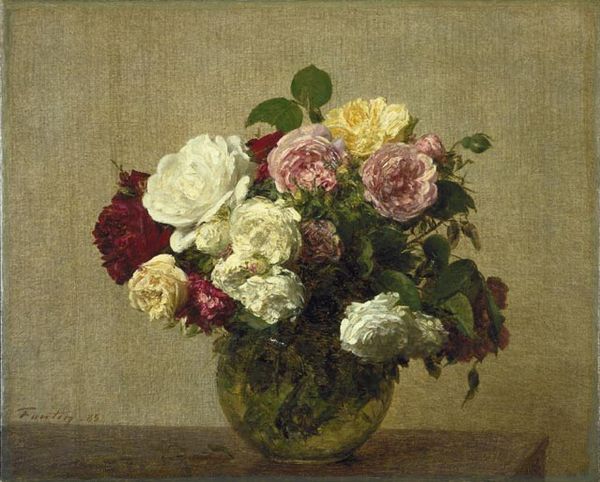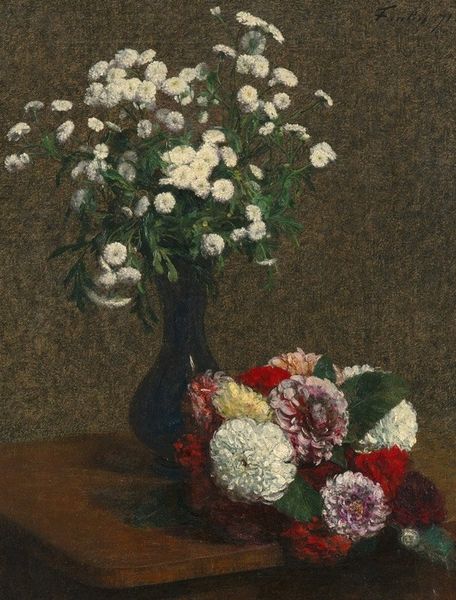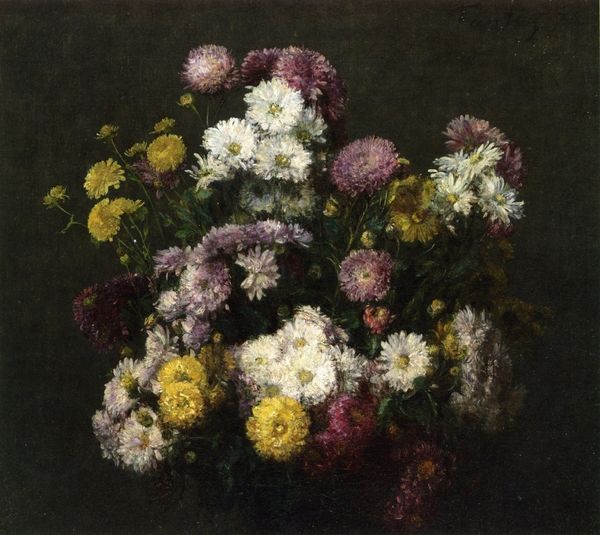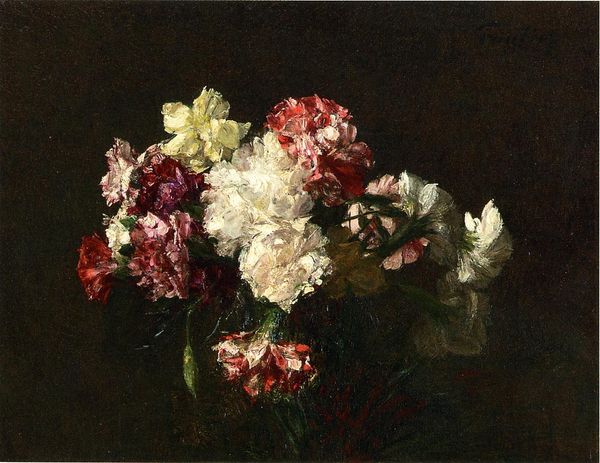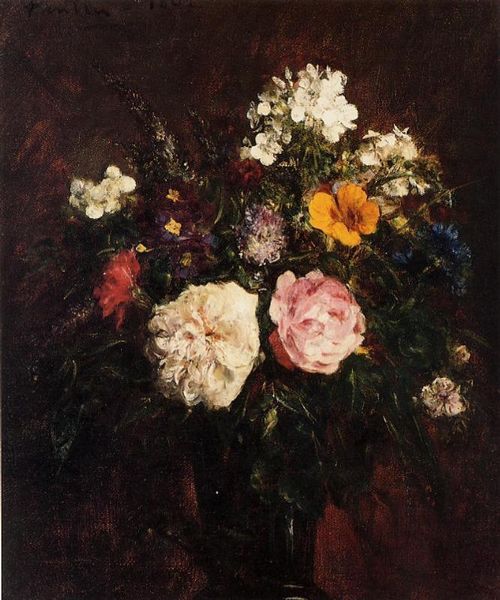
Copyright: Public Domain: Artvee
Curator: Looking at Fantin-Latour's "Fleurs Diverses" from 1904, my first thought is... coziness. It’s like stepping into a dimly lit, warm room on a chilly autumn evening. Editor: Interesting take. The array of mixed flowers displayed on canvas evokes the bourgeois salons of the time, spaces increasingly occupied and influenced by women who helped cultivate a floral language used to express emotions and convey hidden sentiments, not unlike today's varied digital expressions of self-representation. Curator: True, there’s a performative aspect there. But what strikes me are those whites—almost creamy, dissolving at the edges. I could get lost in just those little spots of oil paint. Do you think this painter's medium could be interpreted through an intersectional lens of, say, race or gender? Editor: Absolutely, especially when you consider the politics of representation within the context of 19th-century French society. Flowers, for instance, were frequently associated with feminine beauty and domesticity, concepts that were simultaneously celebrated and used to confine women to specific roles. Fantin-Latour both subscribes to and pushes against that understanding by painting from life with raw emotions. It brings up notions of class as well. While urban women navigated commodified flower culture, the toil involved in the actual harvesting of flowers, typically by young, working-class women, often went unrecognized. Curator: Ah, the "labor of love," right? A bit romantic, isn't it? This bouquet appears wild, too, not overly arranged. In fact, he does an extraordinary job of letting the composition have its own "nature," its own life force. It's rather intuitive and free-flowing if you ask me, an escape from conventional thinking... It reminds me of walking freely into my neighbor’s lush flower garden to enjoy some "guilty pleasure." Editor: Well said. Fantin-Latour created this piece late into his career, and with impressionistic influences like these, what could otherwise be considered traditional painting gains a layer of expression beyond its representational value. This shift parallels emerging discussions on women's rights and agency within society, allowing viewers to rethink historical constructs, gender roles, and societal power dynamics. Curator: Indeed! I didn't see that shift until now. This dialogue helps add meaning. It becomes something bigger— almost subversive in its understated way. Editor: Exactly, prompting me to rethink history and painting—like these bouquets themselves. Thank you!
Comments
No comments
Be the first to comment and join the conversation on the ultimate creative platform.
